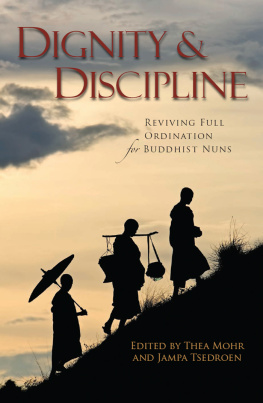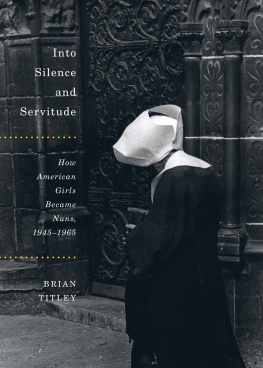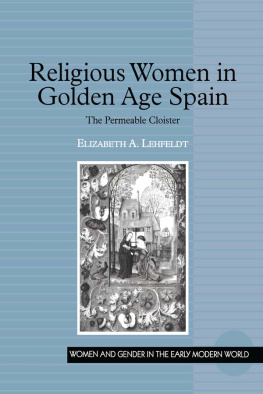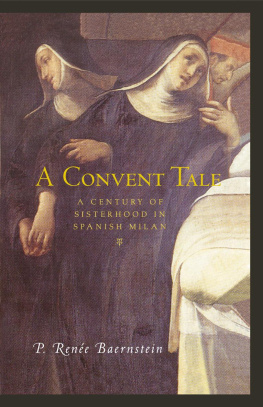
TO SERVE GOD IN HOLY FREEDOM
This book presents one of the first accounts of Christianity in colonial India by a nun. Set in Goa in the early eighteenth century, this translation of Soror Magdalenas account from Portuguese brings to life a watershed moment in the politics of Christian faith in early colonial India.
The volume recounts the nuns rebellion against the then Archbishop of Goa, Dom Frei Ignaio de Santa Teresa. In their account they accused him of mistreating the nuns and implored the Superior General and the King of Portugal to replace him. It sketches the intricate relationships between the nuns themselves, the clerical and secular authorities, the fidalgos and the lower classes, Hindus and Catholics, and nuns and priests. It goes on to discuss the convents finances and the controversies surrounding them, the politics of the Church, as well as contemporary preoccupations with miracles and demons.
Expertly annotated and introduced by Daniel Michon and David Addison Smith, this book is key to understanding Portuguese colonial rule in India. It will be of great interest to scholars and researchers of South Asian studies, Portuguese studies, religion, especially Christianity, and colonialism.
Daniel Michon is Associate Professor of Religious Studies at Claremont McKenna College, California, USA. He has published a series of articles and a book on archaeology, religion, and digital technology and has written on Taxila and Sanghol in India and on Sambor Prei Kuk in Cambodia. His turn to the colonial period in India emerged out of his first book, Archaeology and Religion in Early Northwest India: History, Theory, Practice (2015), where he explored British interpretations of archaeological evidence, which in turn led him to the Indo-Portuguese world.
D. A. Smith is a translator and writer based in Houston, Texas, USA. His works include The Sign of Wrath (2017), a translation of Orlando da Costas O Signo da Ira; Avante, Goeses, Avante!: The Portuguese Poetry of Laxmanrao Sardessai; and Sita Valles: A Revolutionary Until Death (2018), a translation of Leonor Figueiredos Sita Valles: Revolucionria, Comunista ate Morte (19511977).
First published 2021
by Routledge
2 Park Square, Milton Park, Abingdon, Oxon OX14 4RN
and by Routledge
52 Vanderbilt Avenue, New York, NY 10017
Routledge is an imprint of the Taylor & Francis Group, an informa business
2021 Daniel Michon and D. A. Smith
The right of Daniel Michon and D. A. Smith to be identified as authors of this work has been asserted by them in accordance with sections 77 and 78 of the Copyright, Designs and Patents Act 1988.
All rights reserved. No part of this book may be reprinted or reproduced or utilised in any form or by any electronic, mechanical, or other means, now known or hereafter invented, including photocopying and recording, or in any information storage or retrieval system, without permission in writing from the publishers.
Trademark notice: Product or corporate names may be trademarks or registered trademarks, and are used only for identification and explanation without intent to infringe.
British Library Cataloguing-in-Publication Data
A catalogue record for this book is available from the British Library
Library of Congress Cataloging-in-Publication Data
A catalog record for this book has been requested
ISBN: 978-0-367-43348-2 (hbk)
ISBN: 978-1-003-00440-0 (ebk)
Typeset in Times New Roman
by Apex CoVantage, LLC
CONTENTS
by Timothy J. Coates
The Convent of Santa Mnica in Goa (India) has an illustrious position in the history of the Catholic Church in Asia. It was the first convent established by Europeans on the continent (1606) and was initially founded to provide a highly respectable alternative to marriage for young ladies in Portuguese Asia. At that time, it enjoyed the support of the local residents of Goa and the town council. Very quickly, Santa Mnica developed a reputation as the convent of distinction within Portuguese Asian society, especially close to home in Goa. Over the course of its many years functioning as a cloistered Augustinian convent, it drew the bulk of its novitiates from Goa but also acted as a cultural magnet by attracting young ladies from a vast array of locales within Portuguese Asia and even well beyond it. Santa Mnica was the largest, the most important, and the richest institution focused on single women in Goa. One of three such institutions, the other two were the shelter for orphan girls (Recolhimento da Nossa Senhora da Serra) and the Madeline House for fallen women (Recolhimento da Magdalena). The reader will find references to both these shelters in this account.
Problems inside convents were frequent in the early modern Portuguese world. Normally such difficulties centered on clashes of personalities and a select few sisters refusing to obey rules or orders from the Mother Superior. This was the case in a series of incidents investigated by D. Joo de Sousa, the Bishop of Porto, in the 1690s in an orphanage and in the Convent of Bom Jesus in Valena (northern Portugal). In the first case, orphan girls were refusing to obey the rules of cloister by speaking with various men (none of whom were priests or their relatives). In the case of Bom Jesus, two sisters had been fighting and the Bishops investigation revealed that the guilty party, Sister Maria Ursula de Esprito Santo, had been drinking too much wine, disobeying the orders of the Mother Superior, and insulting another sister. Such problems were endemic to convents, but the problems faced by the nuns in Santa Mnica (which the reader will discover in this account) went far beyond personal squabbles and breaking a few rules.
In spite of their religious, cultural, and economic importance, none of these female-centered institutions in Goa has attracted the scholarly interest they merit. This is especially unfortunate given the importance of Santa Mnica and the pivotal role it played in Goan society. As a result, while the broad outline of events surrounding the convents history is known, there are numerous aspects, both large and small, that remain obscured. For example, what was the economic impact of the convent in Goa? How did the nuns manage their assets and support themselves? What negotiations transpired in accepting novitiates, and how did this change over time? What was the day-to-day life of the nuns? What was the role of the convent within the administration of the church? What cultural and social influence did the convent and its nuns have on Goan society as a whole? In a power struggle among the Mother Superior, the Archbishop, and the Viceroy whose word would ultimately prevail?
These are some of the many unanswered questions that surround the history of Santa Mnica, and we get a tantalizing look at some answers, and even more indirect suggestions, made in this unique and most revealing first person plea from the Subprioress of the Convent, Sister Magdalena de Santo Agostinho, to high officials of both the Catholic Church in Rome and the Kingdom in Portugal. According to Sister Magdalena, the administration of the convent has been derailed because of the constant interference of the Archbishop, who has bent and broken many of the convents rules while being too familiar with several of the nuns. Worse still, his interference has caused a serious rift within the institution, creating two separate groups of sisters: those who oppose him (the vast majority) and a relative handful of his followers. Furthermore, the Archbishop has maneuvered to place his supporters in positions of authority within the convent and sidelined the majority of nuns who are against him.








